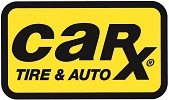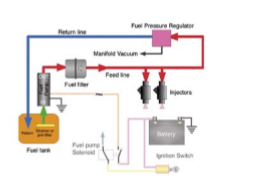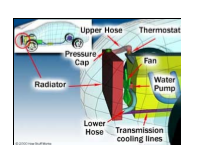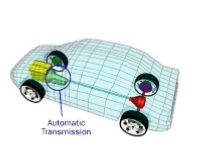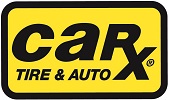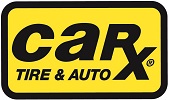Title Page
-
Conducted on
-
Prepared by
-
Franchisee
-
Market
-
Location
Fuel System Service
-
Why service the fuel system?
A natural by-product of burning fossil fuels is the production of carbon. These carbon deposits build up in the intake system disrupting fuel and air flow. This condition will eventually cause driveability issues. Carbon build up on the back side of intake valves and the tips of injectors will disrupt injector spay patterns causing fuel vapors to turn into droplets causing incomplete burn and poor fuel economy. -
Selling Fuel System Service –
-
Fuel system service is not typically found in manufacturers scheduled maintenance. This service must be identified and sold. Problem causing soot and carbon build up around the throttle plate can be found as early as 15k miles. The key to optimum induction and fuel system performance is regular maintenance. Fuel system service may be suggested every 15k – 30k miles. As customers are in for service, it is your job to educate them to possible service needs.
-
Fact finding : Fuel service is identified through inspection.
-
Use the Courtesy inspection report.
-
Review Example Sales Presentation
-
Our technician has indicated on the courtesy inspection report that your air intake has soot build up around the throttle plates. If this continues it may have an effect on the engine idle and performance. If we can see soot around the throttle plates, there is a good chance the entire intake may need cleaning. I would suggest that you have us perform a fuel system service. This service will take care of the air intake and clean in and around the fuel injectors. Can we do that for you today?
-
Communicate the benefits that fuel system service can provide.
-
♦ Restores idle properties. ♦ Restores smooth power. ♦ Helps to Improve fuel mileage and reduces emissions. ♦ Cleans in and around fuel injectors. ♦ Prolongs the life of fuel system components.
-
Show & Tell the customer the need. Bring the customer to the vehicle. Show the customer the soot in the throttle plates. Explain how if enough build up holds that throttle plates open it will affect idle quality.
-
What to look for : ♦ Vehicles over 15k miles that have not had fuel system service before. Fuel system service should be performed every 15k – 30k miles. ♦ Look for carbon build up at throttle plates. ♦ Poor engine idle or stalling. ♦ Hesitation. ♦ Customer complaint of poor gas mileage.
-
What to beware of : ♦ Make sure your technicians know not to spray cleaner into MAF sensors. ♦ Make sure your technicians check for any air ducts leaks before the throttle body. ♦ Make sure your technicians maintain around 1500 Rpm’s when cleaning with IV induced cleaner. ♦ Make sure your technicians always drive the vehicle immediately after performing induction service to clear loose deposits and exhaust stream.
-
ASK FOR THE SALE
Power Steering System Service
-
Why service the Power Steering system?
The power steering fluid is probably one of the most neglected fluids under the hood. As the power steering system accumulates miles, microscopic particles of metal and rubber can buildup in the fluid. These particles can act like an abrasive and accelerate pump and gear wear, so the fluid should be changed periodically. -
Selling Power Steering System Service –
-
Power steering fluid service is being found in more and more manufacturers scheduled maintenance requirements. This service must be identified and sold. Performing thorough Courtesy Inspections is the best method of uncovering service needs.
-
Fact finding: Power steering service is identified through inspection
-
Use the Courtesy inspection report.
-
Show and Tell. Our technician has indicated on our courtesy inspection report that the power steering fluid in your car appears very dirty. Let me show you a sample of what your fluid looks like.
-
Communicate the benefits that power steering system service can provide. ♦ Provides smooth steering. ♦ May quite noisy pumps. ♦ Helps stop leaks. ♦ Prevents seepage. ♦ Keeps seals and O-rings soft and pliable.
-
What to look for ♦ Vehicles over 30k miles that have never had power steering fluid service before. ♦ Scheduled Maintenance requirement. ♦ Noisy power steering pump operation. ♦ Fluid Contamination - Particles seen in fluid
-
What to beware of – ♦ Make sure your technicians are checking for binding in the steering system. Hydraulic or mechanical problems may already exist in the steering system. ♦ Make sure your technicians do not allow air to be introduced into the system while performing fluid service.
-
ASK FOR THE SALE
Cooling System Service
-
Why change Anti-freeze?
Anti-freeze is not only designed to protect the engine from freezing it also provides rust protection and lubrication for pump seals. When these rust inhibitors and lubricants break down, the engine block is prone to corrosion. Scale, rust and sludge will build up in the radiator and reduce system performance. Eventually system failure. In vehicles using Dex-Cool anti-freeze even though the freeze protection is rated for 100k miles, it is still prone to the same breakdown of the rust inhibitors and lubricants of regular anti-freeze. -
Selling Cooling System Service –
-
Cooling system service seems to be a seasonal service. When in fact it is part of regular scheduled maintenance. However many car owners neglect the cooling system until problems arise. Many manufactures recommend cooling system service every 24k mile intervals as part of their scheduled maintenance requirements. Even though extended life coolant freeze points may be adequate, if contaminates are present I.e. Scale, rust and sludge service may be appropriate. As customers are in for service, it is your job to educate them to possible service needs.
-
Fact finding: Conventional Coolant. Over two year or 24k miles, ask the customer if they have ever serviced the cooling system?
-
I see your vehicle is over two years old and has over 24,000 miles. Have you had the cooling system serviced? (If the customer is skeptical) Use the owners manual for credibility. Check the scheduled maintenance requirement. ♦ Lets look in your owners manual to see what it requires?
-
Use the Courtesy inspection report.
-
Our technician has indicated on our courtesy inspection report that the cooling system in your vehicle is showing signs of rust and corrosion. We tested the freeze point and it has diminished XX%. I see your vehicle is over two years old and has more than 24,000 miles on it. Have you ever serviced the cooling system before?
-
Extended Life Coolant
-
Our technician has indicated on our courtesy inspection report that the cooling system in your vehicle is showing signs of rust and corrosion. Even though it is extended life coolant, this is a sign that the rust and corrosion inhibitors are breaking down.
-
What to look for: ♦ Vehicles over 24k miles that have never had cooling system service before. ♦ Scheduled Maintenance requirements. ♦ Freeze rating of a test sample of coolant. ♦ Fluid Contamination – sludge, rust. ♦ Scale and corrosion seen in the radiator.
-
What to beware of: ♦ Motor oil or Transmission fluid found in coolant. ♦ Radiator cooling fin condition. ♦ Pressure in the cooling system that pushes coolant out of the radiator while the cap is off, engine running and the system is cool, could indicate a problem with a head gasket
-
ASK FOR THE SALE
Transmission Service
-
Why change the Transmission fluid?
Transmission fluid begins to break down as soon as the vehicle is put into service. Friction modifiers depleted from the fluid will begin to affect shift characteristics. As this takes place, average transmission temperatures begin to rise. Internal transmission wear will begin to accelerate. Microscopic contaminates will be carried in the fluid throughout the transmission. Overall transmission performance begins to suffer. -
Selling Transmission Service –
-
Transmission fluid service must be sold. Most consumers are not in the routine of servicing the transmission fluid as they do the engine oil. Many manufactures recommend transmission fluid service at 30k, 60k and 90k mile intervals as part of their scheduled maintenance requirements. As customers are in for service, it is your job to educate them to possible service needs.
-
Fact finding: Over 30k miles, ask the customer if they have ever serviced the transmission fluid?
-
♦ I see you have over 30,000 miles on your vehicle. Have you ever serviced the transmission fluid before? (If the customer is skeptical) Use the owner’s manual for credibility. Check the scheduled maintenance requirement. ♦ Lets look in your owner’s manual to see what it requires?
-
Use the Courtesy inspection report. ♦Our technician has indicated on our courtesy inspection report that the transmission fluid on your vehicle appears very dirty. I see you have over 30,000 miles on your vehicle. Have you ever serviced the transmission fluid before?
-
Communicate the benefits that transmission fluid service can provide : ♦ Prolongs transmission life. ♦ Helps maintain the elasticity of transmission seals. Less chance of fluid leaks developing. ♦ Prolongs the life of the transmission filter. Some manufacturers say the filter does not need to be changed until 90,000 miles when the transmission is service at 30k, 60k mile intervals. ♦ Reduces internal transmission temperature. ♦ Corrects or improves poor shift characteristics.
-
Show & Tell the customer the need.
-
What to beware of : ♦ Fluid services will not correct, miss shifts, pump pressure, transmission DTC’s. ♦ High mileage (80k-90k) vehicles that have never had fluid service performed on the transmission. ♦ Complaints of transmission problems. ♦ Low transmission pump pressure (under 15psi) when correctly hooked up to the Transmission flush machine.
-
ASK FOR THE SALE
-
-
Add signature
